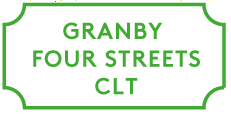What is a Community Land Trust?
A Community Land Trust (CLT) is a not for profit community-based organisation run by volunteers that delivers housing and other community facilities at permanently affordable levels for local people.
It does this by holding the land in trust, separating its value from that of the building that stands upon it, and leasing it to home owners on long leases or letting it out at an affordable rent. The CLT is then able to deliver permanently affordable housing by fixing the price the homes should be sold at in the future. Any increase in the value of the land will be locked in by the CLT for the permanent benefit of the community.
CLTs range in size, can be rural or urban and provide a variety of housing tenures as well as other community facilities, including workspaces, energy generation, community food and farming. A CLT is usually constituted as an Industrial and Provident Society or Company Limited by Guarantee, and may or may not have charitable status. Despite these different forms and activities, CLTs tend to have in common the aims of meeting local housing need providing long-term community benefit.
The benefits of a CLT
There are a number of benefits to setting up and running a CLT. Usually, the stimulus is a desire to create affordable homes that are available to local people who cannot afford open market housing. However, often local people might take on another challenge facing their community, such as setting up a community shop, or purchasing the local pub when it is about to close.
CLTs are locally driven, controlled and democratically accountable.
CLTs can meet local housing need even in areas with very high house prices.
CLTs, by retaining an equity share in each property, provide housing that is permanently affordable, benefitting many generations of residents.
CLTs give the community an asset for the future.
CLTs genuinely empower local communities, where communities are part of the vision and solution for their local area.
What does "community" mean?
It is up to the members of the CLT to determine what community the trust will seek to serve. Usually it relates to people that live and work, or want to live and work within a defined geographical area, perhaps a number of local parishes or an urban neighbourhood.
How does a CLT create affordability?
To create affordability a CLT needs to receive initial subsidy in one form or another; be it free land, or financial grants from government, charities or benefactors. Once properties have been built, the land on which they are built is protected from fluctuations in land market valuations by a legal ‘asset lock’ that is a fundamental part of all the CLT structure.
Are CLTs just about building homes for rent?
No. CLTs usually have wider ambitions than to just provide affordable homes for rent. They set out to address local housing needs, whatever that need may be. It might be a family seeking to buy a share in their home, or an older person seeking to downsize to more appropriate accommodation, freeing up a larger family home in the process. CLTs are also providing opportunities for self-builders, mutual homes ownership and co-housing schemes.
Where does a CLT get its land?
There are a number of possible sources of land. A CLT may:
Receive public land at little or no cost;
Purchase a rural exception site at about agricultural value;
Acquire a site at open market value, through access to grant funding or community share issues;
Already own a site that is permitted for development.
How is community ownership of the land protected for the future?
CLTs can hold their assets in perpetuity, but do need to have the flexibility to respond to future circumstance, perhaps by selling a home if there is no longer a need for it. The CLTs legal ‘asset lock’ dictates that assets can only be sold or developed in a manner which benefits the local community. So if a home is sold the cash realised is protected and can be re-invested into something else that the trust’s members think will benefit the local community.
How are CLTs run?
CLTs are locally driven, controlled and democratically accountable. They have a membership that is open to all who live or work in the defined community, including occupiers of the properties that the Trust owns. The members elect a volunteer board to run the trust on their behalf on a day to day basis. Usually, the board comprises a balanced mix of supportive local residents, tenants and employers; people from the wider area with useful skills to offer; and additional representatives from, for example, the local authority, housing associations and community organisations.

